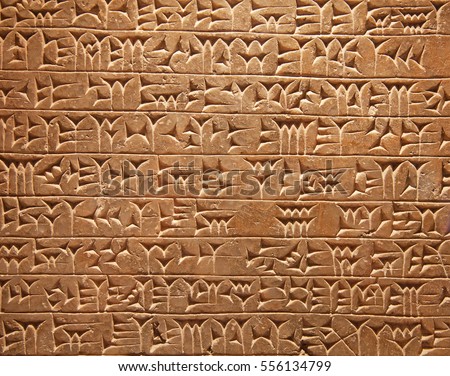The major approach to philosophy among the Tamils appears to be Hermeneutical and especially Hermeneutic Semiotics such as my series on Icon thinking and so forth would illustrate.
The definite shape to this way of philosophizing was given by Tolkaappiyar (c. 300 BC) where this methodology was given the name 'Nuul neRi' ( the final sutra in the second book) and which when translated in Sanskrit becomes Tantrika ,just like another ancient Tamil term Nuul Utti was translated into Sanskrit as Tantra Yukti etc. One meaning of Tantrism is Nuul Neri, i.e. approach to philosophy or metaphysics as Hermeneutic Sciences.
All major developments in Tamil Philosophy have this as the methodological orientation.
The analysis of TIME as available in Tamil philosophical texts such as Tolkaappiyam, Tirumantiram, Civanjanabotham and so forth is quite distinct and distinguishing it from Advaita Vedanta and other schools of Vedanta and Indian philosophies. Though I have explained this in numerous postings, let me try again in relation to the notions of Siva as Mahakaalan and Kaalaakaalan, i.e. the great primordial source of TIME as well as the great destroyer (kaalan : the Yama but who destroys) of Time.
For one thing we notice that if TIME is identified with Kalachakra, i.e. as integral part of the cosmos, an objective reality just like the stars and galaxies, then the mind CAN NEVER BE FREE of Time in understanding the Cosmos. It has to NEGATE the reality of the Cosmos in order to make sense of BEING as Free of Time. But this is like wishing away what is real and hence purely a mental exercise such as that of the Advaities. If we disallow this kind of purely mental negations, BEING as the cosmos would be locked up in phenomenal presence suffering changes that pertain to the historical. Here we must note that BEING in Itself is unchanging and hence free of TIME, in fact ABOVE Time. In the consciousness of BEING, Time is not a factor at all and only because of which He stands non-alien to everything in the world, understanding everything within itself and as it is. (avaiyee taneeyaay)
These notions are philosophically well established by Meykandar in his Civanjanabotam. There he notes that BEING stands 'kaalattil taakkaatu ninRu" i.e stands as there without being infected with Time. He also notes that BEING is 'cudduNarvu iRantu ninRa Cagkaaram" ie. One who stands ABOVE the temporally infected the-tic consciousness, consciousness with referrentiality.
Thus BEING in Itself ( coruubam) is PURE in that he is FREE of TIME but at the same time He is Mahakaalan, the One who is the source of Time consciousness of the human understanding.
Now in connection with this we should note that TIME exists only in human UNDERSTANDING, it is an objective reality only in the understanding, the cudduNarvu, the the-tic consciousness and which always comes along with the notions of TIME as well as Directed Space and in this Meykandar would agree with Kant who also noted the same and because of which he said that these notions a priori, already there as constituents of human understanding and without which it cannot function. He also noted causality as belonging to this category of the mind.
But Meykandar in noting this also notes that Human mind can ascent to an understanding of everything without TIME and which understanding is Civanjanaam, the Sivasattu that confronts only NOTHINGESS as there beyond itself ( yaavaiyum cattu edir suunyam). This is the understanding of Ding-in-Sic that Kant noted but said that it is something impossible, thereby banishing the most important developments of metaphysics into 'transcendental imaginations".
But how does Meykandar offer a rational explanation and hence a foundation for the Moksa concept of Saiva Siddhanta?
The Time Consciousness in human understanding exists in TWO forms and which was known to the Tamils from the days of Tolkaappiyar itself viz. kuRippuk kaalam ( intentional time) and Cuddukkaalam ( world time) and which parallels recent analysis of Time by Heidegger where he notes the kuRippuk Kaalam as Temporality but beyond which he does not go.
The KuRippuk Kaalam, the intentional time, is that which underlies our Historical Thinking and in which the basic component is that of Future Orientation and in terms which the current is noted as "now' and the past is noted as the 'no more current' and so forth. These are the mukkaalam, the three ektases of Time and you can read about it in Heidegger's Being and Time, a marvelous book is Western Philosophy.
But why is the understanding essentially historical and in that also PROJECTIVE?
The Tamil Saivites including Meykandar notes that this is because there is a 'kaaddutal' , a showing and because of which anmas enjoy a 'seeing' and because which it is projective, functions with Kurippuk Kalaam and hence temporality. Without this prior showing the anma cannot see and be projective (Meykandar: kaaddu odunGkak kaaNaatu) This notion was the most important contribution of Appar ( 6th cent) : kaaNpaar aar kOl KaNNutal kaaddaakkaalaee : who can ever see anything at all ( hence become projective) if the Third Eyed BEING does not show?
Why should BEING show so that anmas SEE and become projective and hence function in terms of Mukkaalam, the three ektases of Time?
The anma in itself is infected with Darkness of ignorance, a natural blindness, an atomicity or aNuttuvam and because which it cannot go beyond a certain circle of understanding and beyond which it cannot move by itself, just no one can lift himself up by pulling his own hair. It is here that we see BEING as providing the various showings because in being ABOVE He is also one-with all . he pulls out the anmas by planting such showings or projects within. These various showings or kaaddutal become the projects of the anmas and which establish the various kinds of INTENTIONALITIES, desiring this and that , wanting this and that, hoping for this and that and so forth throwing them also into the temporal way of Being in the World, i.e. in KuRippuk Kaalam. So in this sense BEING becomes the Mahakaalan, the source of Temporality and hence TIME as such as part of the human understanding.
It should also be noted that there is learning on the part of anmas ( and NOT BEING) by such showings and seeings and the limiting point of which is ABSENCE of the inner blindness and where UNDERSTANDING shines forth as the Civanjaanam, the Absolute Understanding a component part of which is Cutta Caitanyam, Pure Consciousness.
This is also the understanding of Civa Himself and hence only He can lift up the anmas into this. Since this understanding is FREE of temporality, He is said to be the destroyer of Time, the kaalakalan.
In Mantrayana this understanding is also said to be that which is established by Om itself, the primordial Logos.
ULLAGANAR
( 1-5-2003, AG )
( editing and re-paragraphing by his student )
( picture taken from https://pixabay.com/ with thanks )






